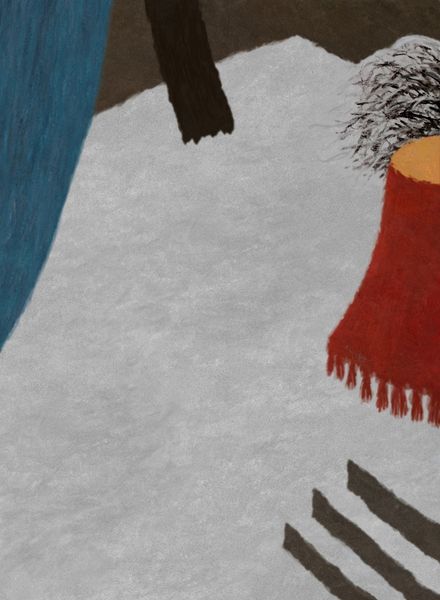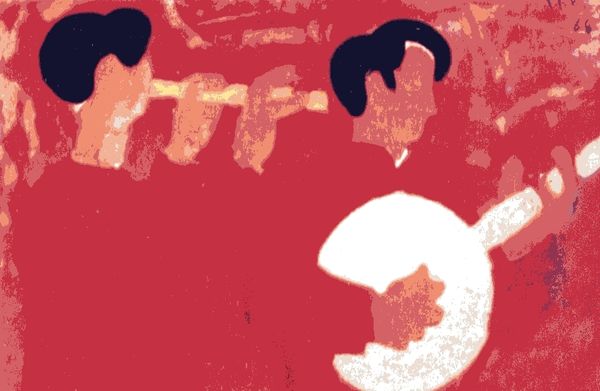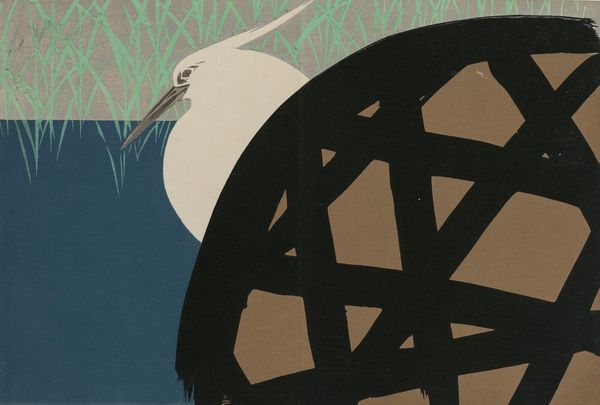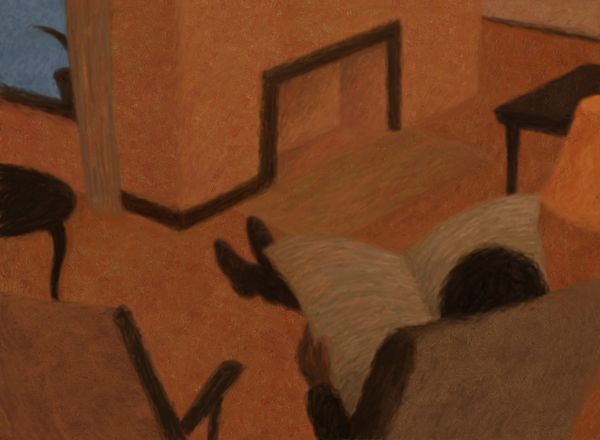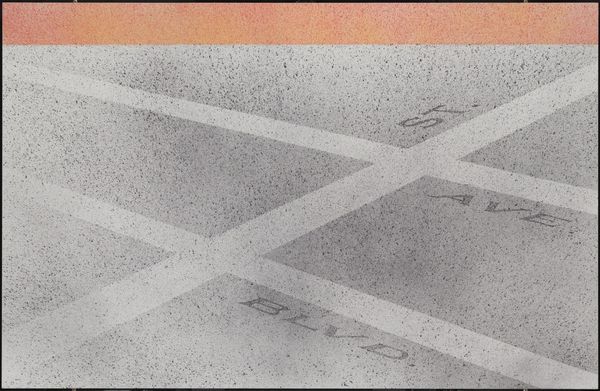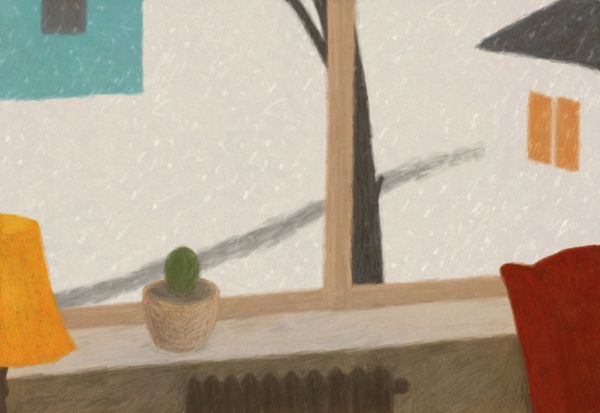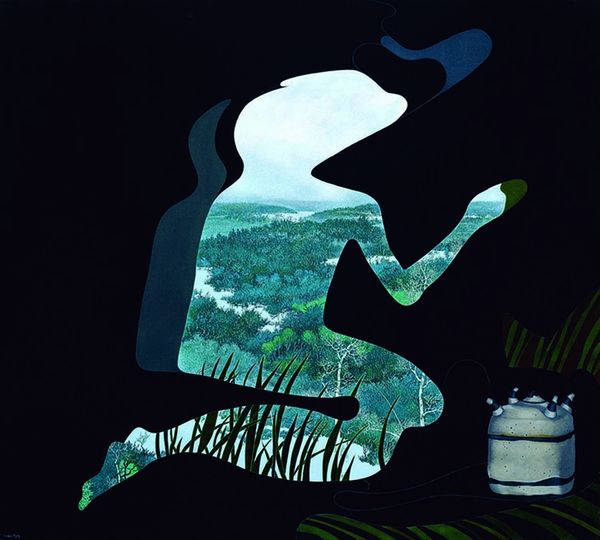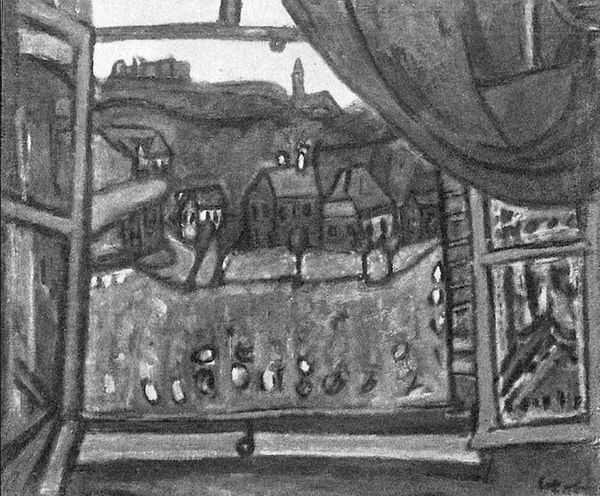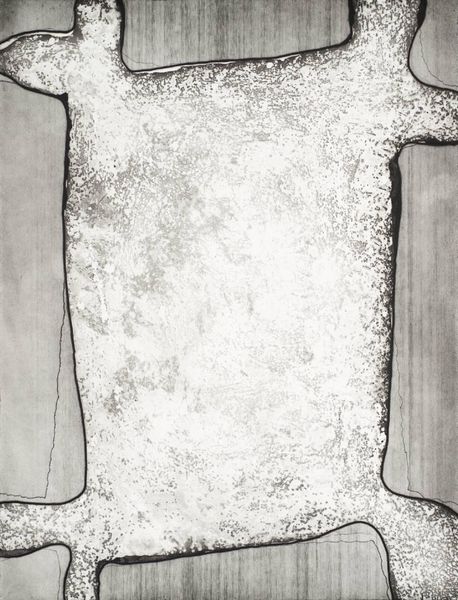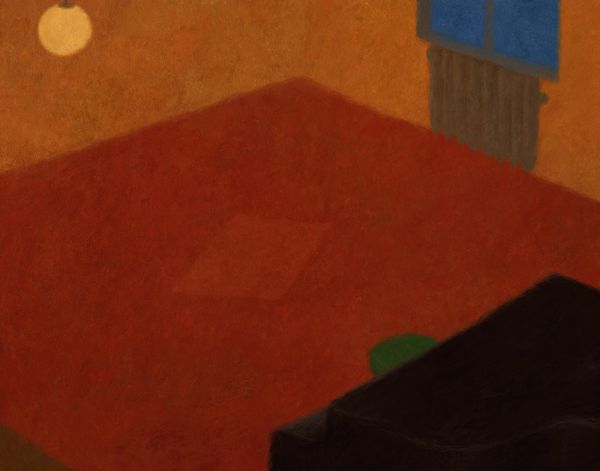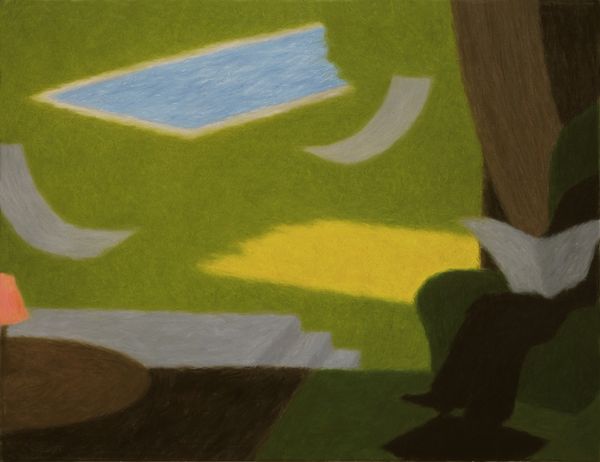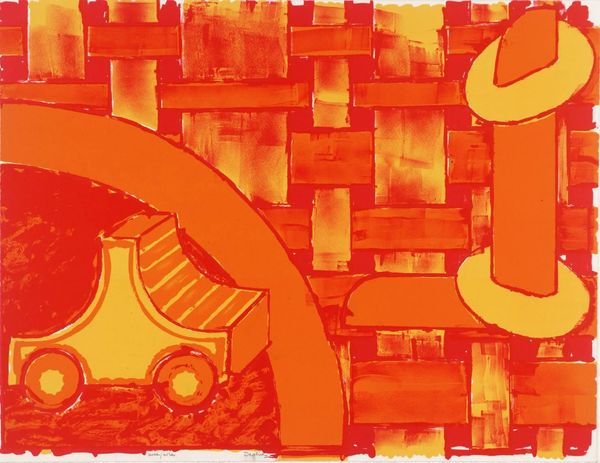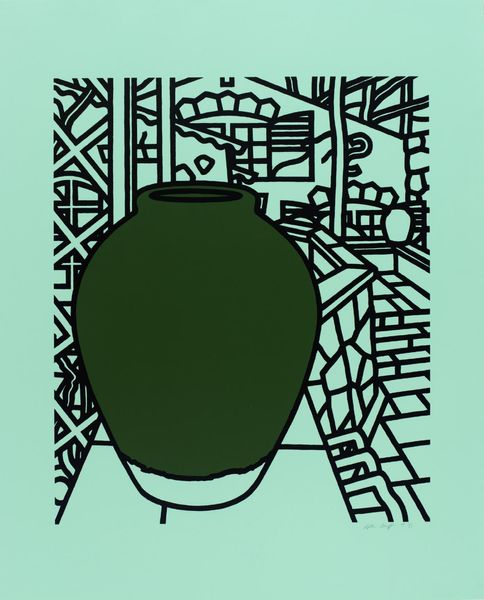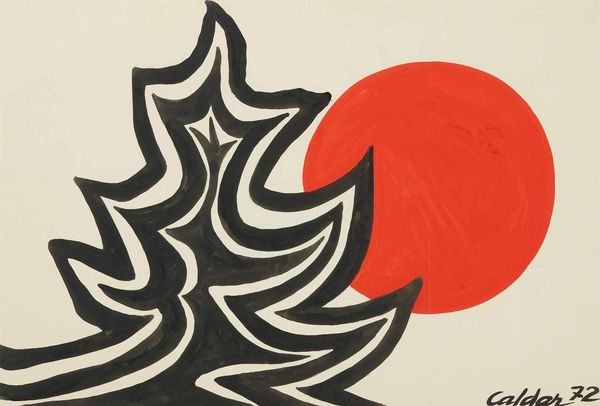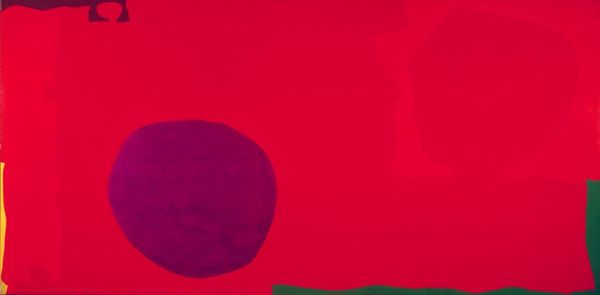
Copyright: Kiyoshi Saito,Fair Use
Editor: Kiyoshi Saito's "Shisen-do, Kyoto (B)," made in 1963, appears to be a woodcut print. I'm immediately struck by the interplay between the geometric shapes and the more organic forms of the trees, creating a stylized yet calming landscape. What aspects of this print capture your attention? Curator: The beauty of this print lies in its masterful manipulation of material. We see Saito, as artisan, carefully balancing the properties inherent to the woodcut process – the sharp lines, the blocky shapes – with a desire to depict a natural, calming scene. Consider the labour: each line meticulously carved, each plane of colour intentionally laid down. How do these constraints impact the final product? Editor: That's interesting; it's almost like the limitations of the medium are part of the message. I hadn’t considered the sheer physicality of the carving process. Curator: Precisely. Ukiyo-e traditions highlight woodcuts and emphasize everyday scenes with detailed observation. Saito is a successor here, but he breaks from traditional Ukiyo-e to offer an industrialised view of the rural. Instead of a traditional single block and layered color to add value, the geometry helps give value to each of the distinct materials by offering depth in an entirely new way. How do these choices highlight Saito’s departure from, and adherence to, those traditional methods? Editor: I see what you mean about the interplay between tradition and modernism here now. Thinking about the consumption of these prints too – were these mass-produced or seen as individual works of art? Curator: Mass production allowed greater access to the wider public. So woodcuts often walked a fascinating line between mass consumption and individual appreciation, shifting how we perceive art in society. This changes traditional art models quite a bit! What impact would the labour cost to manufacture versus sell these items be? Editor: So, considering the material process informs not just the aesthetic, but also the socioeconomic impact of the artwork... Fascinating. I’ll definitely think differently about prints going forward. Curator: And hopefully consider their relationship to industry!
Comments
No comments
Be the first to comment and join the conversation on the ultimate creative platform.
